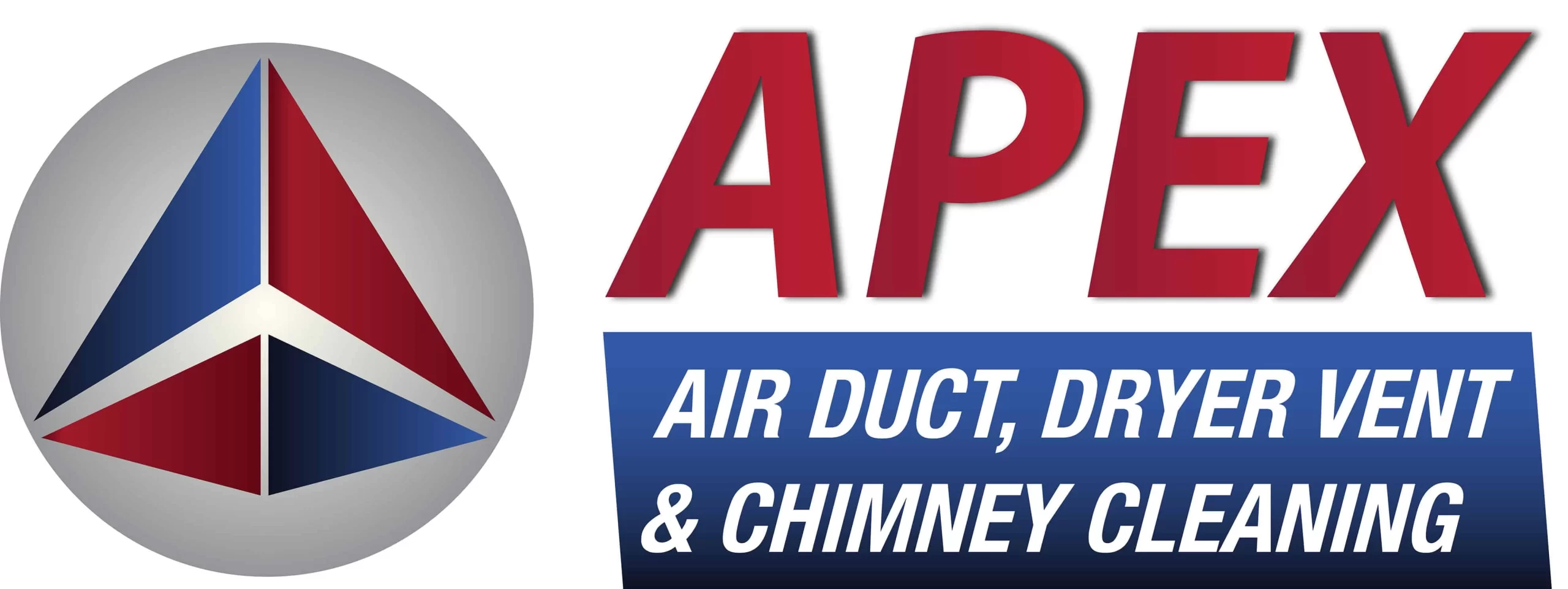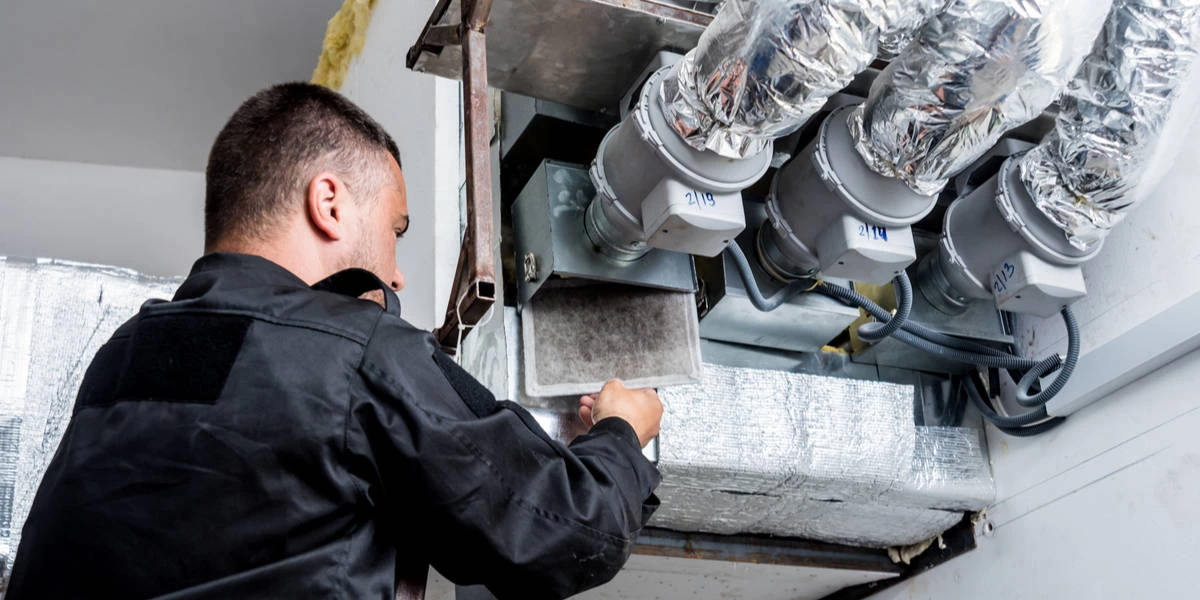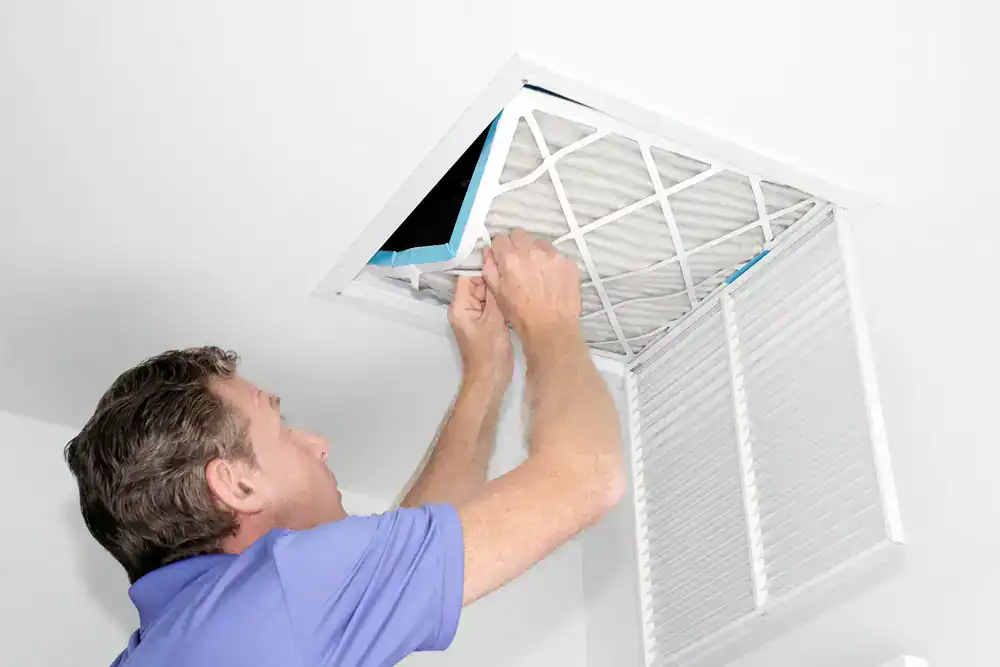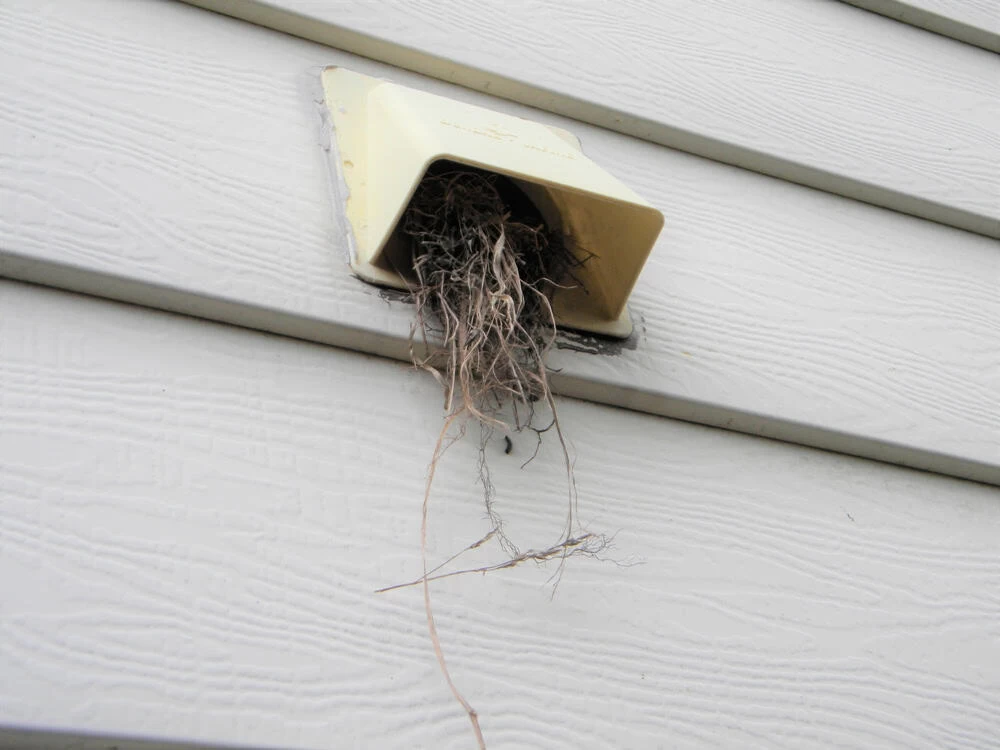Summary:
AI-Powered Predictive Maintenance for New Jersey Homes
The global smart home market is projected to reach $174 billion by 2025, with growth largely attributed to increasing AI technology penetration in smart home devices. For New Jersey homeowners, this means access to sophisticated monitoring systems that were once only available to commercial buildings.
Smart algorithms now monitor specific system parameters, enabling predictive HVAC maintenance through detection of technical and operational anomalies, with complementary reports analyzing up to a year’s worth of data to provide targeted optimization recommendations. This shift from reactive to proactive maintenance represents a fundamental change in how you can protect your home investment.
Predictive maintenance, driven by smart monitoring, takes a more efficient approach by predicting when equipment failure is likely to occur based on real-time data, with continuous monitoring and advanced algorithms identifying trends and anomalies that signal when parts or systems are likely to fail.
Smart Chimney Sensors: Early Detection for Safety and Efficiency
TVOC air quality monitors and related systems detect allergens, volatile organic chemicals, toxins, natural gas, propane, carbon monoxide, smoke and other pollutants that adversely impact health, with connected systems automatically turning on air purification devices, venting air out of rooms, or issuing alerts. For chimney systems specifically, this technology represents a significant advancement in home safety.
Traditional chimney maintenance relies on annual inspections that can miss developing problems between visits. Ignoring chimney maintenance can lead to costly repairs, reduced efficiency, and even health hazards like carbon monoxide leaks. Smart sensors change this dynamic by providing continuous monitoring of critical safety parameters.
Weather-damaged lining systems, flue obstructions and loose masonry materials all present threats to residents, with a chimney deteriorated by constant exposure to weather becoming a potential safety hazard. Modern sensor technology can detect these conditions as they develop, rather than after they’ve created dangerous situations.
Smart sensors can detect smoke, gas and water leaks, attempted burglaries and other emergencies before an event becomes too unmanageable. When integrated with your home’s smart system, these sensors provide immediate alerts to your smartphone, allowing for rapid response even when you’re not home.
The sophistication of these systems continues to improve. Temperature and humidity sensors can prevent overly dry and hot indoor conditions by helping property owners better manage HVAC, humidification and dehumidification systems, helping prevent dangerous growth of mold and microorganisms while revealing atmospheric pressure changes, with attached systems automatically adjusting temperature and humidity to match preset personal preferences.
HVAC Diagnostics: Real-Time Performance Optimization
Faulty residential HVAC systems waste billions of dollars of energy usage in the U.S. each year, meanwhile heavily affecting occupant comfort and causing complete operational failures, with fault detection and diagnosis methods assisting technicians in discovering and locating faults as early as possible to optimize system efficiency through predictive maintenance. This massive inefficiency represents both an environmental concern and a significant financial burden for homeowners.
Smart monitoring leverages the power of connected devices and IoT technologies to provide real-time insights into HVAC system performance, with modern HVAC systems equipped with sensors that collect crucial data on temperature, pressure, humidity levels, airflow rates, and overall system efficiency. This comprehensive data collection enables unprecedented visibility into system health.
One of the most significant advantages is the increase in energy efficiency, with HVAC systems running at peak efficiency using less energy and resulting in lower utility bills, as smart monitoring allows detection when systems are not running optimally and helps make necessary adjustments to keep energy usage in check. For New Jersey homeowners facing rising energy costs, this optimization can result in substantial savings.
The HVAC Predictive Maintenance Suite enables technicians to troubleshoot issues remotely by providing remote access to equipment data and diagnostic tools, reducing the need for on-site visits and resulting in reduction of manpower costs and travel time. This remote capability means faster diagnosis and often quicker resolution of problems.
IoT enhances HVAC maintenance through predictive scheduling, early fault detection, and remote diagnostics, with predictive maintenance analyzing real-time conditions to reduce downtime and costs, while continuous monitoring and remote diagnostics allow early issue detection, preventing major breakdowns and lowering maintenance expenses. The result is more reliable system performance and fewer unexpected failures.
Integration Trends and Future Capabilities
The AI in Smart Home Technology Market was valued at $12.7 billion in 2023 and is predicted to reach $57.3 billion by 2031 at a 21.3% CAGR. This explosive growth indicates that AI integration in home systems is not just a trend but a fundamental shift in how homes operate.
Over 57% of U.S. households are expected to have at least one smart home device in 2025, with about 75% of American households using voice assistants by 2025 to control almost everything in living spaces. This widespread adoption creates an ecosystem where chimney and HVAC monitoring can integrate seamlessly with other home systems.
AI, hubs, smart home communications protocols, and safety and security solutions are major trends, with artificial intelligence enhancing the smart home by offering intuitive and efficient user experiences through edge and cloud processing, as well as generative and agentic AI.
Voice Control and Natural Language Processing Advances
With advances in natural language processing, voice control will proliferate as users appreciate the convenience and responsiveness it enables, with driving expanded voice assistant capabilities through advances in natural language processing and neural networks and deep learning improving AI’s ability to understand natural speech patterns and commands. This evolution means more intuitive interaction with your home’s maintenance systems.
Natural language processing techniques are being utilized in smart home systems to support voice control capabilities, allowing users, especially the elderly and disabled, to control things like door locks, lighting, temperature, alarms, and appliances through voice commands. For maintenance applications, this means you can verbally request system status updates, schedule inspections, or receive alerts about developing issues.
The global voice assistant market is projected to reach $27.16 billion by 2026, with advances in natural language processing allowing these systems to understand context better and personalize responses, making interactions more intuitive and reducing friction in daily smart home usage, while improvements in AI-driven language models enable enhanced understanding of diverse accents, dialects, and speech impairments.
The practical applications for chimney and HVAC maintenance are significant. Imagine asking your home system about air quality levels, requesting a maintenance history report, or receiving verbal updates about system performance trends. The voice recognition market is projected to grow significantly, with estimates suggesting it could reach $27.16 billion by 2026, as voice control systems become a standard feature in many devices, enhancing user experience and making technology more accessible.
Smart thermostats contain sensors to measure and ensure proper humidity levels and temperature settings and can be controlled remotely by household members or automated to adjust temperature according to occupancy patterns, with smart appliances using sensors and controls to remotely track and manage variables such as temperature, humidity, and energy use, while demand response enabled devices can be controlled remotely by energy providers to reduce peak power demand.
Professional Service Integration with Smart Technology
Smart monitoring provides significant reduction in overall downtime, as unexpected HVAC failures can cause major inconvenience whether in commercial or residential settings, with smart monitoring enabling a proactive approach to avoid costly breakdowns by addressing potential issues before they turn into system failures. This proactive approach fundamentally changes the relationship between homeowners and service providers.
According to the Building Owners and Managers Association (BOMA), HVAC failures remain the leading cause of tenant complaints and unplanned maintenance costs in commercial buildings, with malfunctioning rooftop units resulting in tenant disruption, lost productivity, and expensive emergency repairs costing up to 30-50% more than planned service visits or preventative HVAC service contracts. Smart monitoring helps avoid these costly emergency situations.
For New Jersey homeowners, this integration means working with service providers who can access your system data remotely, provide more accurate diagnostics, and schedule maintenance based on actual system conditions rather than arbitrary timelines. With predictive maintenance, repairs can be done during off-peak times, avoiding disruptions during critical business hours, and the same principle applies to residential scheduling convenience.
New Jersey Uniform Construction Code requires chimney certification for replacement of hot water heaters, furnaces, or boilers, with New Jersey law mandating chimney inspections at least once per year by qualified professionals. Smart monitoring systems can help ensure compliance with these requirements while providing continuous safety oversight between formal inspections.
The data generated by smart systems also enables service providers to offer more precise maintenance recommendations. If a fan motor starts to vibrate more than usual or an air filter becomes clogged faster than expected, smart monitoring will detect these deviations and trigger maintenance alerts, allowing issues to be addressed before they lead to major malfunctions, providing insight impossible with traditional maintenance methods.
Planning Your Smart Home Maintenance Upgrade
Approximately 30% of U.S. households have adopted at least one smart home device, with projections indicating this number could rise to 50% by 2025, as the global smart home market is expected to reach $174 billion by 2025. The momentum behind smart home adoption means now is an ideal time to integrate these technologies into your maintenance strategy.
The key is starting with systems that provide the greatest safety and efficiency benefits. The most commonly adopted devices include smart speakers, smart thermostats, and security cameras, with 70% of consumers prioritizing security features when choosing smart home devices, followed by energy efficiency and convenience. For chimney and HVAC applications, focus on sensors and monitoring systems that address your most critical concerns.
When you’re ready to upgrade your home’s maintenance approach with smart technology, working with experienced professionals who understand both traditional systems and modern monitoring capabilities ensures optimal results. We at Apex Air Duct Cleaning & Chimney Services combine decades of expertise with cutting-edge diagnostic tools to help New Jersey homeowners protect their investments and enjoy the peace of mind that comes with proactive, intelligent maintenance.




